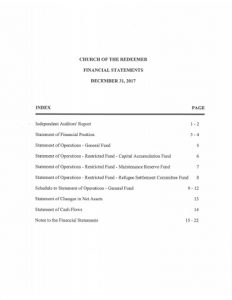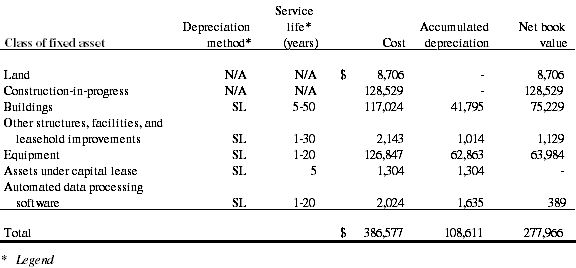
Increased purchasing or reduction of accounts payable will increase this ratio. It indicates the number of times current assets of a company can cover https://www.business-accounting.net/a-beginner-s-guide-to-s-corporation-taxes/ the short-term liabilities in case of an emergency. This shows a company’s solvency and therefore its degree of strength to weather hard times.
- This financial ratio is part of and the main Key Performance Indicator (KPI) for majority companies around the world.
- Increased purchasing or reduction of accounts payable will increase this ratio.
- This data can also compare a company’s financial standing with industry averages while measuring how a company stacks up against others within the same sector.
- Steps to reduce the outstanding debt financing the capital should be taken to improve this ratio pro-actively.
- Your credit utilization ratio is the amount you owe across your credit cards (and other revolving credit lines) compared to your total available credit, expressed as a percentage.
- This information is supplied from sources we believe to be reliable but we cannot guarantee its accuracy.
Market Value Ratios
Your credit utilization ratio is the amount you owe across your credit cards (and other revolving credit lines) compared to your total available credit, expressed as a percentage. In the FICO scoring model, this accounts for 30 percent of your overall credit score. This ratio measures your profitability based on your earnings before interest and tax (EBIT). This measure is used to gauge the efficiency of the business before taking any financing means into account (such as debt financing and tax considerations). This ratio is often used to compare the operating efficiency between similar businesses.

Application of Ratio Analysis
It worth noting that this is a very industry-specific ratio for example grocery retailers selling perishable goods will have a higher turnover than a furniture retailer selling non-perishable goods. The company’s efficiency in making purchases and inventory management reflects through this ratio. An unusually high ratio indicates a lean inventory while a low ratio indicates capital tied up in inventory that can be more efficiently deployed elsewhere. Financial ratios generally hold no meaning unless they are compared against something else, like past performance, another company/competitor or industry average. Thus, the ratios of firms in different industries, which face different conditions are usually hard to compare.

What is your credit utilization ratio?
Times Interest Earned is used to measure a company’s ability to meet its debt obligations. Failing to meet these obligations could force a company into bankruptcy. Inventory Turnover measures how many times a company’s inventory will be sold and replaced in a year. Use the Days Receivables Calculator to calculate the days receivables from your financial statements. Earnings Per Share is the portion of a company’s profit allocated to each outstanding share of common stock. Operating Margin shows the profitability of the ongoing operations of the company, before financing expenses and taxes.

Though this seems ideal, the company might have had a negative gross profit margin, a decrease in liquidity ratio metrics, and lower earnings compared to equity than in prior periods. Static numbers on their own may not fully explain how a company is performing. These ratios convey how well a company can generate profits from its operations.
Financial Ratios Analysis
We are compensated in exchange for placement of sponsored products and services, or by you clicking on certain links posted on our site. While we strive to provide a wide range of offers, Bankrate does not include information about every financial or credit product or service. First, ratio analysis can be performed to track changes to a company over time to better understand the trajectory of operations.

From simple ratio calculations to the use of artificial intelligence for improved accuracy, financial ratios have evolved to keep up with the changing needs of businesses and investors. Financial ratios above might or might not suit with your company’s condition. There are still other financial ratios options you can choose if you fill some of ratios above are not suitable. Remember to define your own ratio references since it might be different between companies.
The calculations provided should not be construed as financial, legal or tax advice. In addition, such information should not be relied upon https://www.accountingcoaching.online/ as the only source of information. This information is supplied from sources we believe to be reliable but we cannot guarantee its accuracy.
Sustainable Growth Rate is the maximum growth rate of a company if none of its ratios change and it does not raise new capital through selling shares. Gross Efficiency of Assets tells us how much income each dollar of assets generates before paying out taxes and interest. The Dividend Payout Ratio is the percentage of earnings that are paid out to shareholders.
This financial ratio calculator in excel spreadsheet will help you calculate those important metrics. It should also help you to learn which accounts in balance sheet as well as profit and loss statement to generate those ratios. You can customize this spreadsheet easily accounting coach bookkeeping by typing row numbers next to respective account names. This tool gives you at-a-glance image of the company through 28 financial ratios. Ratio analysis is important because it may portray a more accurate representation of the state of operations for a company.
The interest coverage ratio is used to determine how easily a company can pay interest expenses on outstanding debt. The ratio is calculated by dividing a company\’s earnings before interest and taxes (EBIT) by the company\’s interest expenses for the same period. When a company\’s interest coverage ratio is only 1.5 or lower, its ability to meet interest expenses may be questionable. Consider the inventory turnover ratio that measures how quickly a company converts inventory to a sale. A company can track its inventory turnover over a full calendar year to see how quickly it converted goods to cash each month. Then, a company can explore the reasons certain months lagged or why certain months exceeded expectations.

